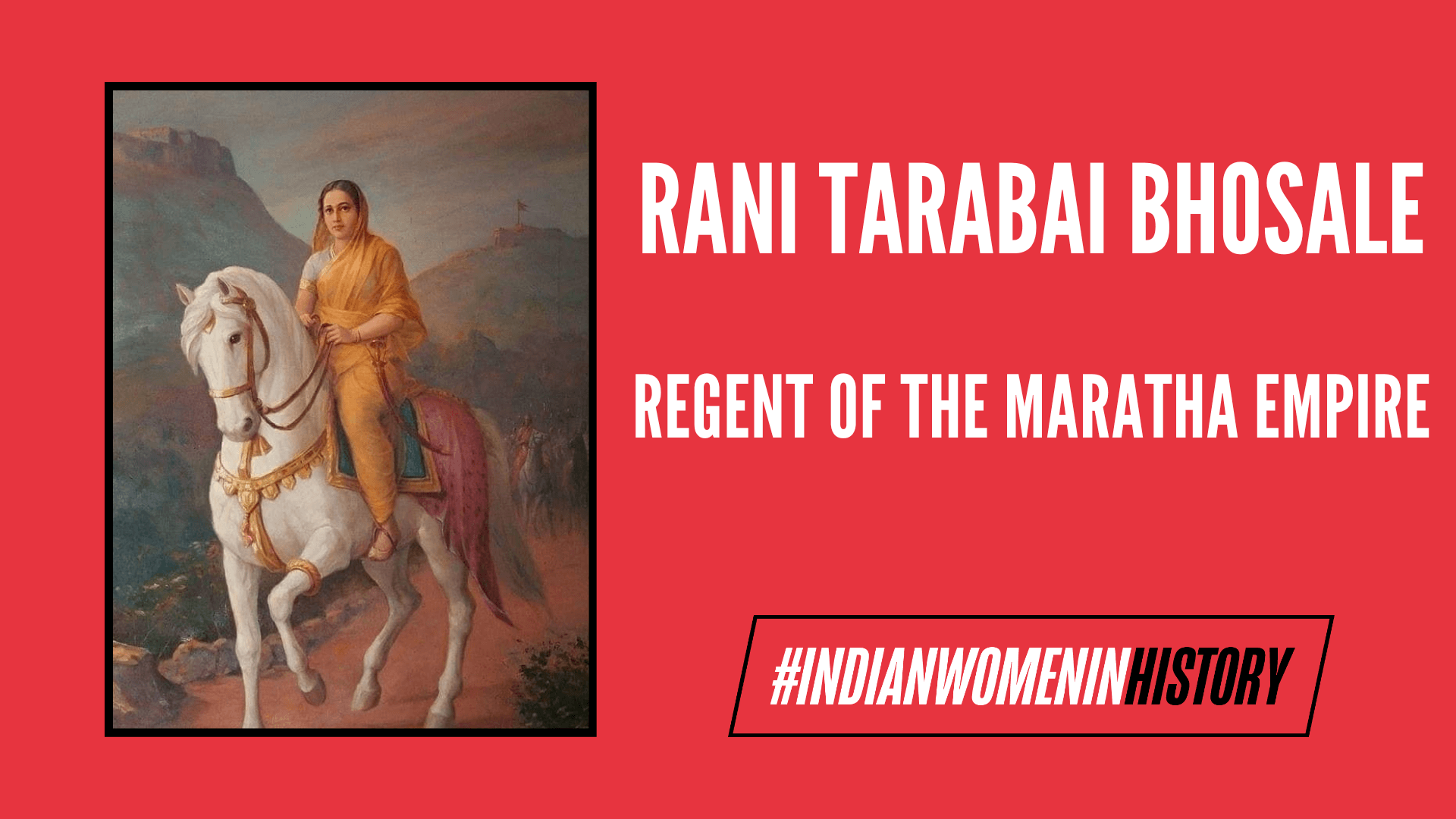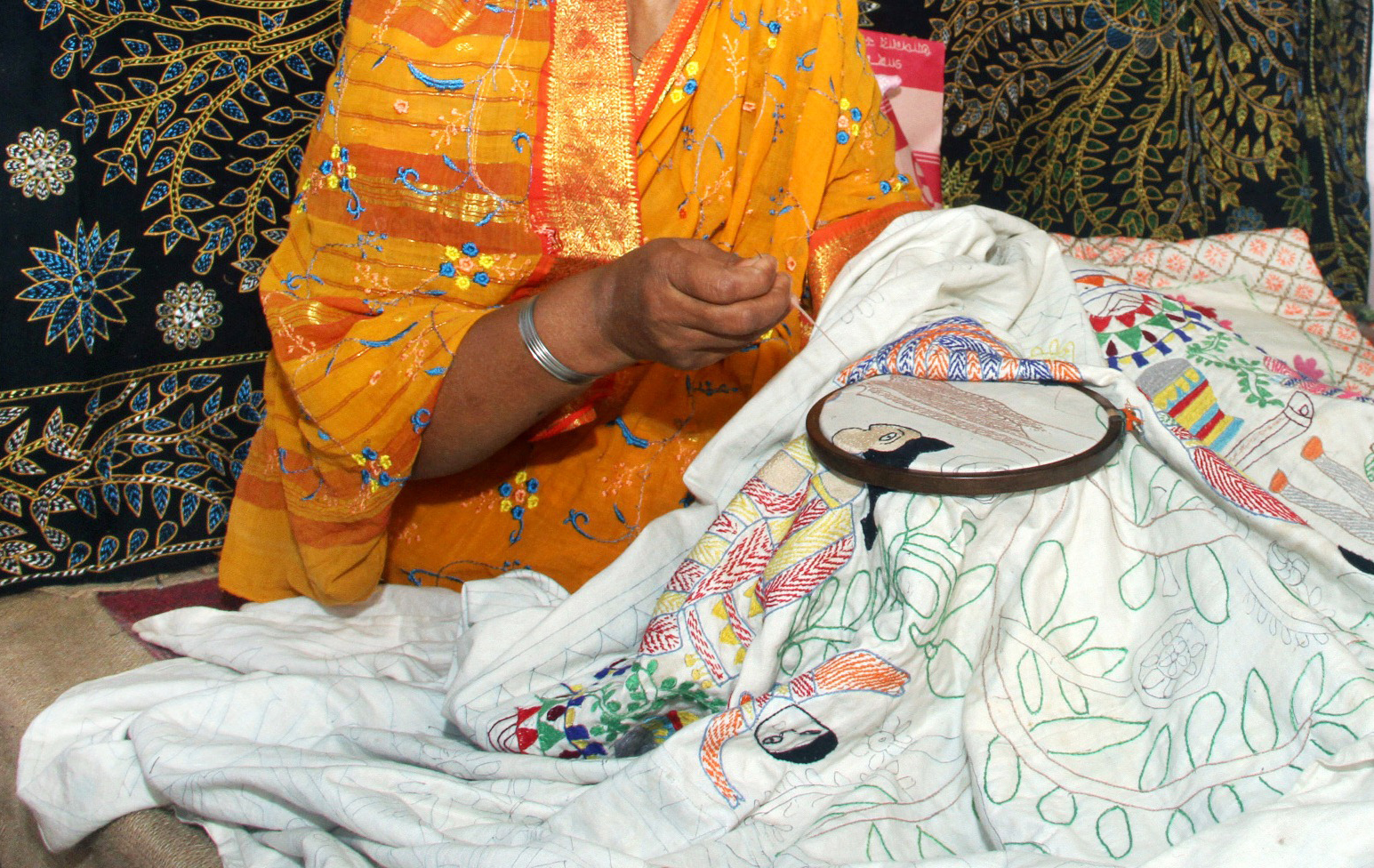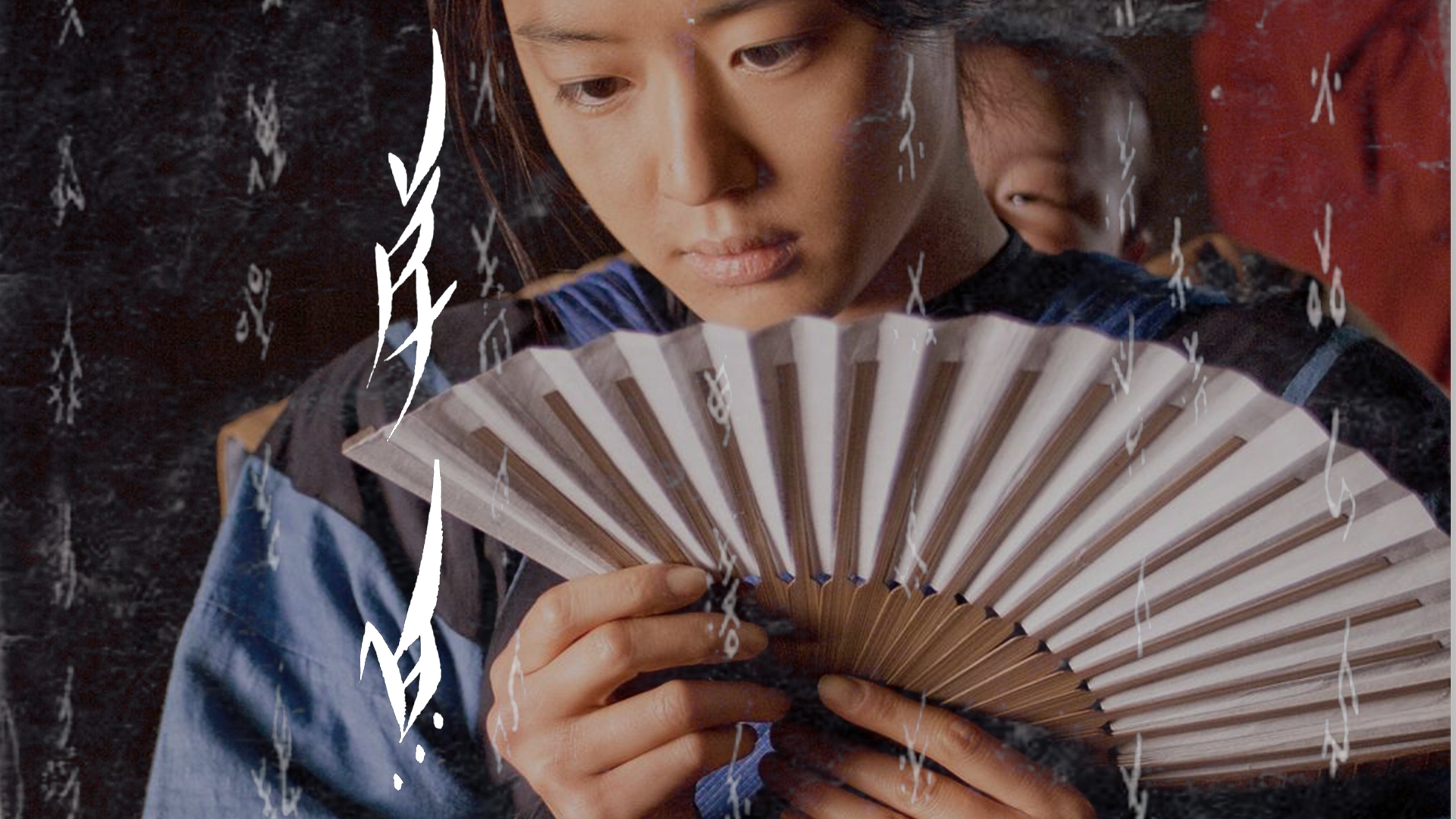At a central junction in Kolhapur is the statue of a woman mounted on a horse, wielding a sword. This is Rani Tarabai, the daughter-in-law of Shivaji and an indomitable and shrewd queen.

Rani Tarabai was the wife of Rajaram, Shivaji’s son from his second wife Soyrabai. After Shivaji’s death in 1680, his first son Sambhaji took over the throne. As he was captured (and later killed), Rajaram was brought into power. He died an untimely death in 1700, leaving behind an heir – Shivaji II, who was only four years old at the time. In his name, Tarabai became the de facto ruler.
Conflict with the Mughals
The Maratha kingdom needed stable leadership after the death of Shivaji and Rani Tarabai was the answer to that. A widowed 25-year old Tarabai channelled all her energies into strategic military planning, to put up a front to Mughal ruler Aurangzeb. A skilled cavalry warrior herself, she had already started learning about civil and political affairs during her husband’s reign.
The idea of a woman leader irked some senior Maratha officials, but even they couldn’t deny her obvious capability. According to the chronicles of Khafi Khan, Aurangzeb and his officers “ordered the drums of rejoicings to be beaten” after the death of Rajaram. They never believed that the “weak, contemptible and helpless” queen could pose a threat to the powerful Mughal Empire.
Taking up the leadership rein
Under her leadership, the Marathas were able to recapture lost territories and also raided southern and western regions in Malwa and Gujarat. Rani Tarabai took lessons from Mughal warfare techniques and learnt to bribe commanders from the enemy camp. Aurangzeb’s death in 1707 happened to be a setback to the Mughal Empire.
To create disturbance among the consolidated Marathas, they released Shahu (Sambhaji’s son) from captivity, to weaken Tarabai’s stronghold. Initially, she opposed Shahu’s ascension. But after desertion from many of her strongest aides, who saw her only as a temporary ruler till Shahu came back, Tarabai reluctantly accepted the kingship of Shahu.
Scaling back and forth in political power
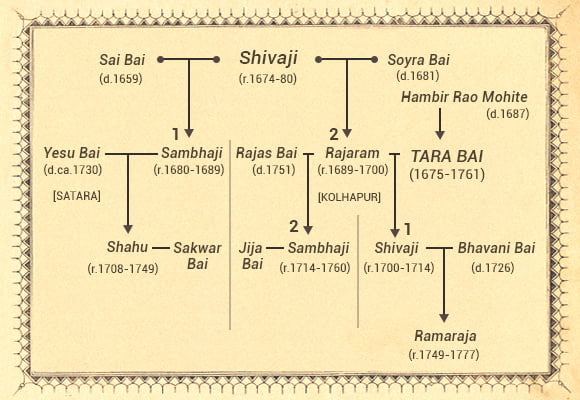
For a brief period in 1709, Tarabai even set up a parallel court in Kolhapur. She was deposed by Rajaram’s other widow Rajasabai, who wanted her own son Sambhaji II on the throne. Eventually, she and her son Shivaji II were imprisoned, where he died in 1726.
Rani Tarabai reconciled with Shahu in 1730, who allowed her to live in Satara only if she agreed to be stripped of all political powers. Nevertheless, she maintained a court in Satara and kept on working within the government by conducting state business, ordering grants and so on.
Also Read: Uda Devi: Dalit Freedom Fighter In The 1857 Uprising | #IndianWomenInHistory
Shahu Maharaj was on his deathbed, looking for an able heir. Sambhaji II had turned hostile. Tarabai, at the age of 73, surprised everyone by revealing the existence of her grandson, Ramraja, who had been brought up by a soldier’s wife in secrecy.
His identity had been concealed because she feared Rajasabai and Sambhaji II would be after his life. Shahu agreed to have him take over the throne and make him his heir. He passed away in 1749, leaving Ramraja as the heir.
However, Ramraja defected to the side of the Peshwas. Tarabai denounced her grandson for this. She tried to get him to remove Peshwa Balaji Baji Rao (acknowledged as the most influential Peshwa) from his position. When Ramraja refused, she imprisoned him in a dungeon. Due to his actions, she believed that this was an impostor sent to her and not her biological grandson.
In Satara, there was a rebellion against her. She managed to crush it but she was beginning to realise that Peshwa power had grown far too much. Unable to garner support among high ranking officials, she eventually gave in to the rulership of the Peshwas. In 1752, she and the Peshwa took oaths of mutual peace at the Jejuri temple. Balaji Baji Rao, in turn for her political passiveness, had to let her control her principality.
She died in 1761, at the age of 86. By then, Shivaji’s descendants were reduced to a titular role as the Peshwa dynasty exhibited ambitious campaigns to expand the Maratha confederacy.
Rani Tarabai’s Legacy
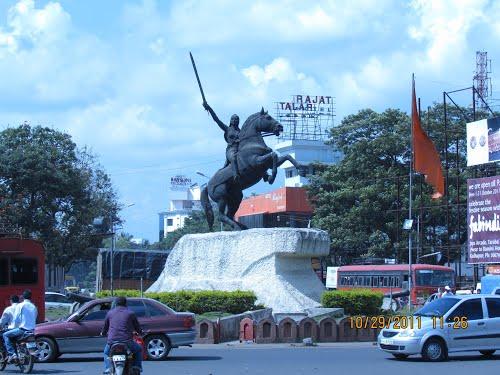
Tarabai was a brave, ambitious and level-headed ruler, who put her kingdom above everything else. She concentrated on fighting the Mughals and was an earnest politician who never went against her own family to attain power. Even after her leadership was snatched away, she continued working in the government.
She refused to stand still and continued to influence politics until her death. Had she not stepped up after her husband’s death and taken over the reins, the Maratha Empire would have disintegrated long before. Had she been able to remain in power, her kingdom may have remained united.
Rani Tarabai was ahead of her times and was forced to kill her ambition despite being capable. The fact that Shahu and Peshwa Balaji had to reach treaties with her time and again is proof of how much influence she had on state politics. The only reason for this was that men in power did not have the sense and strength to accept an able ruler: just because she was a woman.
Also Read: 5 Women Warriors We Should Know About | #IndianWomenInHistory
Featured Image Credit: iDainik
About the author(s)
Tanika Godbole is a writer/journalist based in Mumbai. She is interested in LGBT and women's rights, and is keen on writing about those topics. She also makes terribly drawn comics on human rights and pop culture. They can be found on https://www.facebook.com/godbolet/
